Japan is a country deeply rooted in tradition, where festivals (祭り, matsuri) and customs are celebrated with great enthusiasm and respect. From spiritual ceremonies at shrines and temples to lively cultural festivals, these events provide a unique insight into Japanese culture and values. Understanding the significance of these festivals, and how to participate, will allow you to connect with Japanese society on a deeper level. This guide will introduce you to the most important festivals and traditions celebrated throughout the year, offering you a chance to immerse yourself in Japan’s rich cultural tapestry.
Major Festivals in Japan
New Year’s Celebrations (お正月, Oshougatsu)
New Year’s is the most important holiday in Japan, celebrated with family gatherings, traditional meals, and visits to shrines for blessings. Preparations begin in late December, and the celebration continues through the first week of January
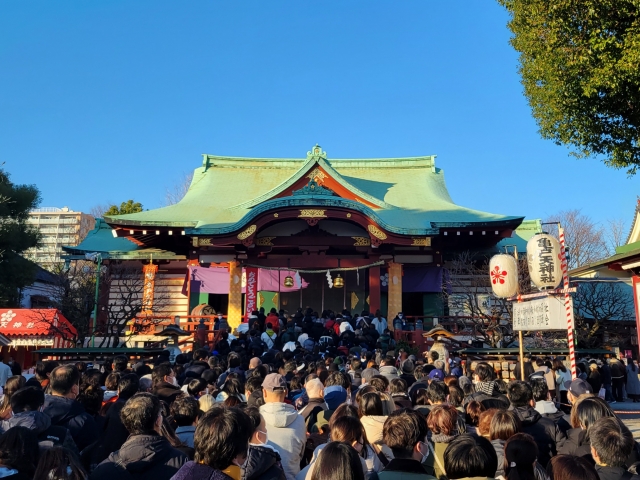
- Hatsumode (初詣): This refers to the first shrine visit of the new year, where people pray for health, prosperity, and happiness. Visitors often write their wishes on wooden plaques called ema (絵馬).
- Osechi Ryori (おせち料理): A traditional New Year’s meal made up of beautifully arranged dishes, each symbolizing good fortune, longevity, or prosperity.

- Kadomatsu (門松) and Shimenawa (しめ縄): Decorative bamboo and pine arrangements (kadomatsu) and sacred ropes (shimenawa) are placed outside homes and businesses to invite good spirits and ward off evil.
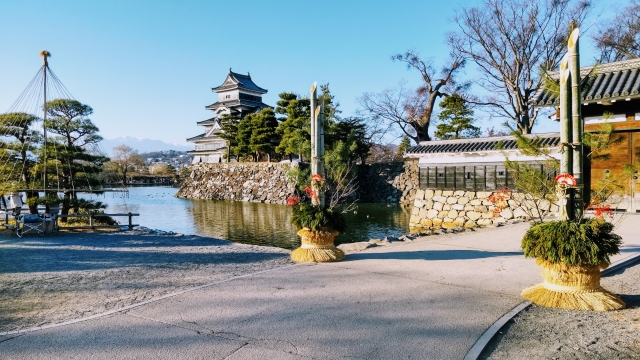
How to Participate
Foreigners are welcome to join in the New Year festivities by visiting shrines and offering prayers. If invited to a Japanese home, enjoy the shared osechi meal and participate in New Year’s greetings by saying “あけましておめでとうございます” (Akemashite omedetou gozaimasu, Happy New Year).
Cherry Blossom Festival (花見, Hanami)
Hanami, or cherry blossom viewing, is one of the most anticipated springtime events in Japan. It celebrates the fleeting beauty of cherry blossoms (桜, sakura), which bloom for a brief period in March or April.
- Hanami Picnics: People gather under cherry trees in parks to enjoy picnics and drinks while admiring the blossoms. These gatherings can be casual or elaborate, with some lasting late into the evening.

- Yozakura (夜桜): This refers to viewing cherry blossoms at night, often accompanied by paper lanterns illuminating the trees.
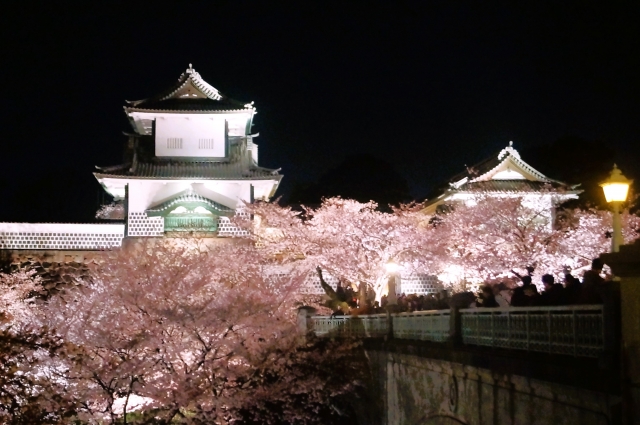
How to Participate
Hanami is a perfect time to experience the social aspect of Japanese life. Grab a picnic blanket and enjoy the blossoms with friends, family, or coworkers. Remember to arrive early, as popular spots can fill up quickly. Take care to clean up after yourself, as maintaining cleanliness in public parks is highly valued.
Golden Week (ゴールデンウィーク)
Golden Week is a series of national holidays from late April to early May, where many Japanese people take time off to travel and relax. It includes holidays such as Showa Day (昭和の日, Shouwa no Hi), Constitution Memorial Day (憲法記念日, Kenpou Kinenbi), and Children’s Day (こどもの日, Kodomo no Hi).
- Kodomo no Hi (こどもの日): Originally known as Boy’s Day, this festival now celebrates the health and happiness of all children. Families display colorful koinobori (carp-shaped streamers), which symbolize strength and perseverance.
How to Participate
Golden Week is an ideal time to explore different regions of Japan, though it’s also one of the busiest travel seasons. If you stay in Japan, you can observe koinobori flying from homes and visit local festivities.
Cultural Traditions and Seasonal Events
Obon (お盆)
Obon is a Buddhist festival held in mid-August to honor the spirits of deceased ancestors. Families return to their hometowns to perform rituals, visit family graves, and welcome the spirits of the departed back into their homes.
- Bon Odori (盆踊り): A traditional dance performed during Obon festivals, often held at temples or in local parks. Participants dress in yukata (summer kimono) and dance to the rhythm of taiko drums.

- Lanterns and Offerings: Lanterns are lit to guide spirits back home, and offerings of food are placed on household altars.

How to Participate
Foreigners can attend Bon Odori dances, where participation is encouraged. Wear a yukata if you wish to blend in, but casual clothing is also acceptable. Be respectful when observing family rituals or visiting temples and graves during this period.
Setsubun (節分)
Setsubun marks the end of winter and the beginning of spring, celebrated on February 3rd. It is traditionally believed to be a time to drive away evil spirits and bring in good fortune
- Mamemaki (豆まき): People throw roasted soybeans either outside their homes or at shrines and temples while shouting “鬼は外! 福は内!” (Oni wa soto! Fuku wa uchi!, meaning “Out with the demons! In with good fortune!”).
- Ehomaki (恵方巻き): A special sushi roll eaten in silence while facing a lucky direction, which changes each year.
How to Participate
Many temples and shrines host mamemaki events, where foreigners are welcome to participate. You can also try eating ehomaki from convenience stores or supermarkets to take part in the tradition.
Tanabata (七夕)
Tanabata, or the Star Festival, is celebrated on July 7th and is based on a legend of two lovers separated by the Milky Way, who are allowed to meet only once a year.
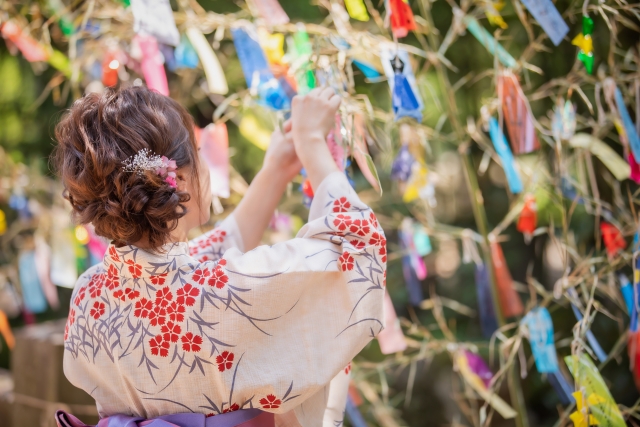
- Tanzaku (短冊): People write their wishes on colorful strips of paper and hang them on bamboo branches, hoping their wishes will come true.
- Festivals: Towns and cities often host Tanabata festivals, with beautiful decorations and parades.
How to Participate
You can take part by writing your own wish on a tanzaku and hanging it on a bamboo tree, which can be found in shopping streets or at local festivals. Many events feature food stalls and traditional games, making it a fun experience for everyone.
Regional Festivals
Gion Matsuri (祇園祭) in Kyoto
Held every July, Gion Matsuri is one of Japan’s most famous festivals. It originated as a religious ritual to ward off plagues and now features grand parades, traditional floats (yamaboko), and street fairs.
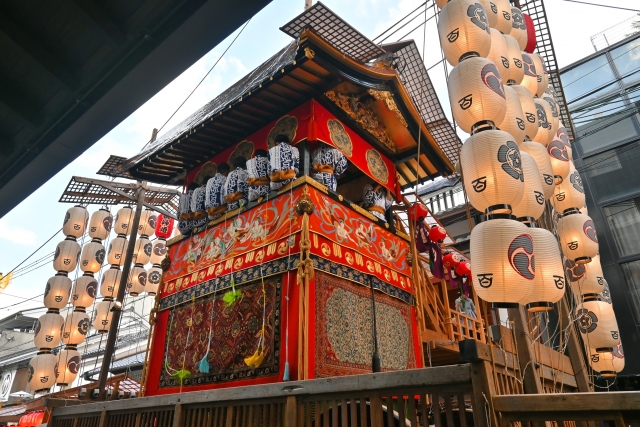
How to Participate
Visitors can watch the spectacular parades or stroll through the bustling streets filled with food stalls and traditional performances. The festival also offers a glimpse into Kyoto’s historical charm.
Awa Odori (阿波踊り) in Tokushima
Awa Odori is a lively dance festival held in August, where thousands of dancers in traditional costumes take to the streets to perform energetic, rhythmic dances.
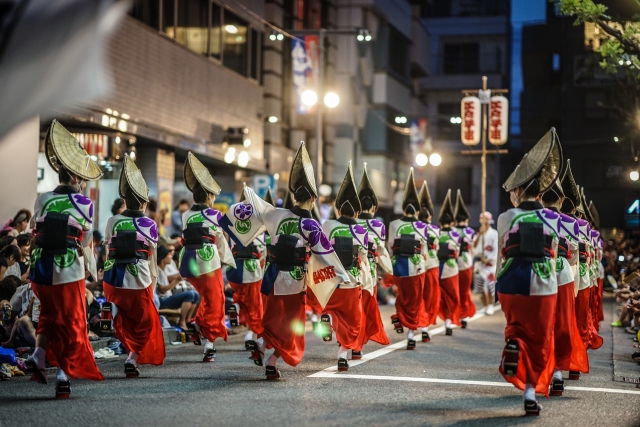
How to Participate
You can join the dancing or simply watch from the sidelines. Many festivals offer areas for beginners to participate, so don’t hesitate to try the dance yourself.
Sapporo Snow Festival (札幌雪まつり)
This winter festival, held in February in Sapporo, Hokkaido, features impressive snow and ice sculptures, attracting millions of visitors

How to Participate
Walk through the snow-filled streets to admire the sculptures or attend one of the many winter activities, such as ice skating or sledding. Don’t miss the opportunity to enjoy Hokkaido’s famous winter cuisine.
Seasonal Traditions and Practices
Seasonal Foods and Customs
Each season in Japan is marked by distinct foods and traditions. For example:
- Spring: Cherry blossom-flavored sweets, fresh vegetables, and tea ceremonies (chanoyu).
- Summer: Cooling foods like somen (thin noodles) and watermelon, along with fireworks festivals.
- Autumn: Harvest festivals and foods like kuri (chestnuts) and matsutake mushrooms.
- Winter: Hot dishes like nabe (hotpot) and festive New Year’s foods.
How to Participate
Sampling seasonal foods is one of the easiest ways to experience Japan’s changing seasons. Many festivals feature seasonal dishes, and supermarkets often highlight special ingredients that are only available during specific times of the year.
If you can’t find the information you’re looking for, please send us a request through the contact form.
We will create articles based on the most frequently asked questions.
Our contact form is here.




